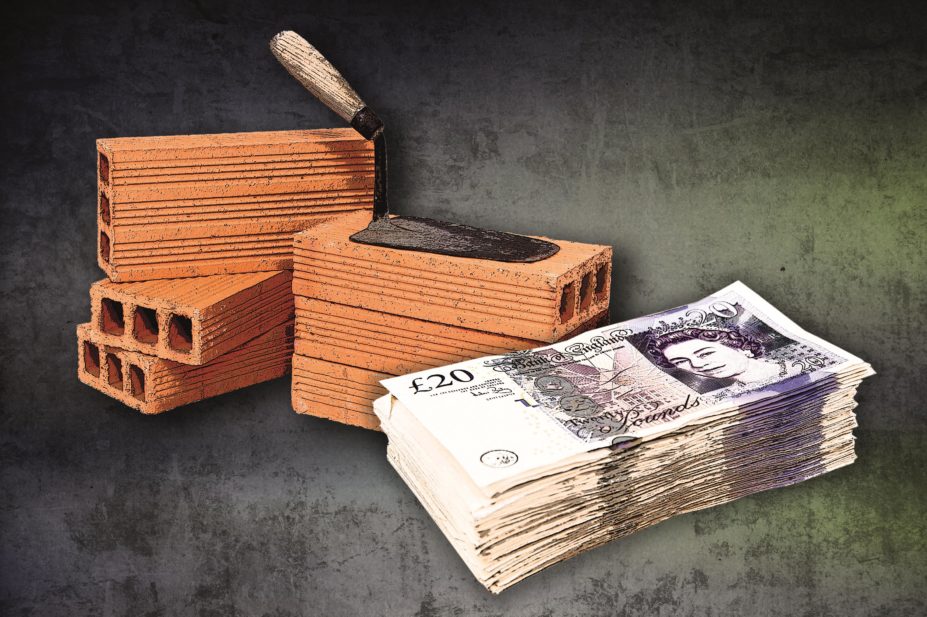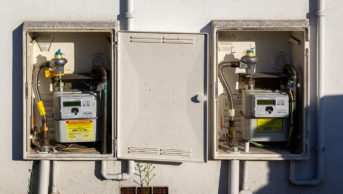
Shutterstock.com / Dreamstime.com / MAG
Cranbrook Pharmacy in Devon opened in March 2015 — a decade after pharmacist Alison Hayes first spotted the opportunity to build a pharmacy in the new town development with planning permission for 2,900 homes.
Her contract application process, which has seen three different sets of market entry regulations, has been plagued by economic recession, delayed construction in the new town, a competitive application, which was overturned on appeal, and premises planning issues.
In the meantime, Hayes has also bought an existing pharmacy, thanks to a combination of low interest rates, equity and financing from banks and wholesaler schemes.
The development of Cranbrook town is now well under way, although the pharmacy is one of the first shops to open in the community — and there is a GP surgery and a train station.
Hayes says the purchase of the existing pharmacy has provided useful subsidy for the new business as it grows. Comparing the two experiences, she says it is far easier to get on the ownership ladder by buying an existing pharmacy business. “That’s if you can find one — there are not that many available,” she says.
So how do the cost, time and other implications differ between setting up your own pharmacy from scratch and taking on an existing pharmacy?
Consider the costs
The costs for applying to set up your own pharmacy are minimal: around £1,500 for necessary NHS contract and premises registration application fees. There may also be planning fees if a specific change of use is required. However, miscalculate the new business’s ongoing viability, and the costs — to your pocket as well as to your sanity — will become much greater. To work out the viability of the pharmacy, the potential pharmacy owner will need:
- a copy of the Drug Tariff, which includes information on the professional fees that pharmacies receive;
- local census and planning information;
- NHS prescribing data for local GP practices.
Nigel Morley, director of consultancy NVM Holdings, suggests between 3,300–3,500 regular customers will generate a break-even income for a pharmacy, generating net profits (after all costs but before tax and depreciation, including loan repayments) of between 7–13% of turnover.
One important question to ask yourself when considering opening a new pharmacy is where your patients are going to come from. For acute prescriptions, the pharmacy of choice will — in most cases — be the most convenient to the GP (electronic prescribing notwithstanding). Repeat prescription patients, however, often have established patterns and will be loyal to the pharmacy they already use, which may already offer a collection and delivery service. You must ask yourself: why would they change and come to you?
“Personal service and undertaking full range of pharmacy services will give yourself a point of difference over the local competition,” suggests Anjana Bulsara, director of St Albans-based AKB Pharmacy Sales.
If you are considering buying a pharmacy, budget for at least £1m plus legal and other purchase costs (allow £6,000–7,000 for specialist legal and conveyancing advice). Since the removal of the 100-hour exemption — and some multiples’ stated expansion plans — pharmacy prices are rising. According to Numark director of marketing Mandeep Mudhar, some are now selling at £2 for every pound of turnover.
Pharmacy sales and valuation company Hutchings Consultants says the price of the pharmacy business will reflect the type of sale — some are asset sales, comprising the goodwill and fixtures and fitting, and some sales include the company as well (including its assets and liabilities), and its profitability.
A key figure from the accounts is the EBITDA — earnings before interest, tax, depreciation and amortisation (accounting for loans or depreciation of assets). When calculating a value for the business, lenders will typically take a multiple of the EBITDA (usually around five to seven-fold).
As well as profitability, other influences on the price will include location. A premium will be attached to pharmacies sited in or near health centres, major cities and those having a standard NHS contract (<55 hours a week). Also, 100-hour pharmacies are now coming onto the market, and these tend to achieve market values of around 50–80% of standard hours pharmacies, except in London where longer hours are expected and accepted.
With regard to the purchase of a 100-hour pharmacy, Bulsara says would-be owners must ask themselves how much value they can add and “whether it is worth the stress”.
Before you buy or apply to set up a pharmacy, consider the opportunity or threat presented to the development of your target business of:
- GP mergers;
- electronic prescription service nominations;
- market entry regulations (in Wales, the Public Health (Wales) Bill proposes to base market entry on pharmaceutical needs assessments);
- hub-and-spoke dispensing and other ‘distance’ or digital selling models;
- NHS funding trends for pharmaceutical services.
Kitting it out
Initial costs, when setting up a pharmacy, include those for the premises and registration. Rents and rates will depend on the location and size of property. Add in the internal fit, furniture, pharmacy equipment, IT systems, alarms, telephone lines and other services, and your start-up costs will be at least £100,000 but probably considerably more. You will need some start-up stock, but twice a day delivery will help you keep this to a minimum.
If you buy an existing pharmacy, the amount of refurbishment required will depend on the state of the business at the time of sale and the attitude of the new owner. Additional stock may be needed, depending on stock assets included in the sale.
Get the staff
In a start-up pharmacy staffing costs are flexible. Minimum staffing requirements are only set for dispensing and are volume dependent. Up to 4,999 items only requires 56 hours, which can be covered by one pharmacist.
But chances are you will be entering a competitive environment with an immediate marketing job to do to generate revenue and custom. This may demand your time away from the pharmacy (which has to be covered by a locum) or a marketing budget or both.
However, in an established pharmacy, staffing is a major fixed cost and levels should be scrutinised carefully pre-purchase. Obligations from the Transfer of Undertakings (Protection of Employment) Regulations (TUPE) 2006 mean that you must take on existing staff and their existing contracts, or go through the appropriate consultation process to reduce headcount, says Sean Mallon, chief executive of Bizdaq. But beware of starting your tenure by making people redundant, says AKB Pharmacy Sales’ Bulsara: “It is costly, time-consuming and will affect the relationship between staff and the new management. Also remember, in a pharmacy, staff are likely to be local people, who are your best marketing asset and worst critic should you upset them. Also, if you decide to build your staff from scratch, you will have to allow for training.”
Take your time
When setting up a pharmacy, the NHS contract application and fitness-to-practise considerations can take up to seven months and up to six more if the contract application is appealed.
If a planning application is required, you will have to add another 8 (possibly up to 13) weeks on to your timescale. Once a routine application is granted, the pharmacy has six months in which to open.
Things happen more quickly if you choose to buy instead. Once you have agreed your offer, allow four months to complete: two months of buyer due diligence (e.g. looking through statements from prescription pricing departments in England, Scotland or Wales) and two months to complete to legal paperwork.
Numark’s Mudhar says: “Both models will require you to work very, very hard the first 10–15 years and you will need to make sacrifices. New owners tell us that it is 20 hours a day working for at least the first 5–10 years, so both types of owner will need to go in with open eyes.”
Case study: working with GPs
The Peasmarsh Pharmacy, in the Jempson’s Superstore in rural East Sussex, opened in July 2013 with four staff under a new contract, granted under the former necessary or desirable test market entry regulations.
Paulet Adimonye, who has been the superintendent at the pharmacy from the outset, said the application was fairly routine. It was subject only to “a few letters” from affected local dispensing GPs and from other pharmacy operators, but there was no appeal.
The pharmacy was opened as an addition to the store as part of an overall store redevelopment.
Business growth has benefited from the pharmacy’s location in a key and established shopping destination for the small community, but also the marketing activities of the wider business which has just celebrated 80 years of trading.
Since opening, Adimonye has spent considerable time with local GPs to build up working relationships, particularly with the dispensing GPs, who have lost dispensing business to the pharmacy. She is also grateful for having some previous locum experience as a superintendent pharmacist because it represents an “adjustment of responsibility” from being a manager.
Her tip for working with GPs is “to be open with them, and give them time to get to know me as a person”.
Reading this article counts towards your CPD
You can use the following forms to record your learning and action points from this article from Pharmaceutical Journal Publications.
Your CPD module results are stored against your account here at The Pharmaceutical Journal. You must be registered and logged into the site to do this. To review your module results, go to the ‘My Account’ tab and then ‘My CPD’.
Any training, learning or development activities that you undertake for CPD can also be recorded as evidence as part of your RPS Faculty practice-based portfolio when preparing for Faculty membership. To start your RPS Faculty journey today, access the portfolio and tools at www.rpharms.com/Faculty
If your learning was planned in advance, please click:
If your learning was spontaneous, please click:


